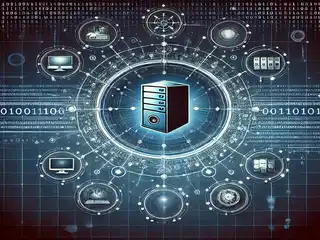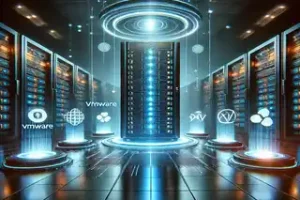KMS servers list: Managing software licenses is super important in IT systems. Key Management Service Servers (KMS) help simultaneously activate software like Windows and Office on many computers. This guide covers everything from KMS Server Setup to KMS Server Management.
What Are KMS Servers?
KMS Servers, part of the Key Management System Servers, play a crucial role in Volume Activation Servers. They automate the activation process across networks, significantly simplifying License Management Servers.
Importance of KMS Servers
Here’s why they are so useful:
- Centralized Activation: Think of a KMS Host as the main switch that turns on all the lights in a building. Instead of going to each room to switch on the lights, you just need to flip one switch. Similarly, a KMS Host lets you activate all Microsoft products from one central place, saving time and effort because you don’t have to activate each computer individually.
- Reduced Internet Dependency: Normally, every computer needs to connect to the internet to activate its software. However, with KMS Server Addresses, all the computers can activate their software just by connecting to the local network. This means they don’t need to rely on the internet, which is great if the internet is slow or not available.
- Scalability: KMS servers are powerful because they can handle much work. They can activate software on a few computers or thousands at once without breaking a sweat. This is perfect for large organizations with many computers because it helps everything run smoothly without delays.
Setting Up KMS Servers
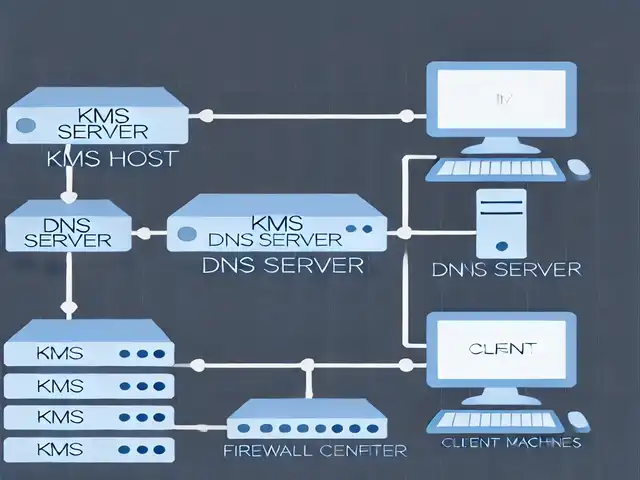
Setting up involves:
- Installation of the KMS Host Key: Crucial for Product Key Management; it enables the KMS Host to activate client machines.
- DNS Configuration: KMS Hostnames must be accurately configured in DNS so clients can locate the KMS Server Addresses automatically.
- Firewall Settings: Adjust to allow communication between the KMS Host and clients.
- Activation Thresholds: Server Activation Tools require a minimum number of clients before activating—5 for servers and 25 for clients.
Managing KMS Servers
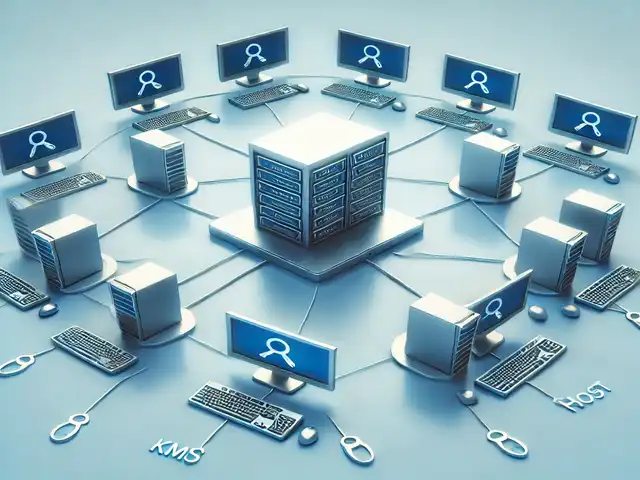
Effective management involves:
- Monitoring Activation Counts: Ensuring the KMS Activation Method is working correctly.
- Updating Server Software: Maintaining current KMS Server Configuration for security and efficiency.
- Troubleshooting Connectivity Issues: Ensuring clients can access the KMS Endpoint without issues.
Best Practices for KMS Configuration
Setting up and managing Key Management Service Servers (KMS) is like ensuring everything in a big puzzle fits just right.
Here are some smart ways to make sure your KMS setup works smoothly and keeps your software running without a hitch:
- Regular Backups: Consider backups like saving your game before a tough level. If something goes wrong, you can always return to your last save. Make sure you save all your KMS Configuration details often to avoid losing any important information.
- Security Measures: Keeping your KMS safe is like locking your doors at night. You want to ensure only the right people can access the Licensing Servers. Use strong passwords and limit who can change settings to keep everything secure.
- Keep Good Records: This is like keeping a diary of what your KMS does. Write down everything from KMS IP Addresses to changes in your KMS Server List IPs. This helps you remember what’s been done and makes it easier to fix any problems.
These best practices will help your KMS run better and make managing your software licenses much easier!
Who Needs a KMS Server?
A KMS Server is like a special helper for businesses with many computers. Here’s who needs one:
- Big Organizations: If you have a company with lots of computers, like 50 or more, a KMS Server is super helpful. It lets you activate software like Windows and Office on all those computers without doing each.
- Schools and Universities: Schools often have many computers in classrooms and labs. A KMS Server makes it easier for them to manage all the software they use for teaching and learning.
- Government Offices: Government offices, such as businesses and schools, also use many computers. A KMS Server helps them keep all their software running properly without hassle.
So, if you have a lot of computers to take care of and want to simplify things, a KMS Server might be just what you need! It saves time and makes managing all those computers a lot easier.
Specific Requirements to Set Up a KMS Server
Setting up a KMS Server is like getting ready for a big project. You need to have everything in place, so it works well. Here’s what you need to set up a KMS Server:
- KMS Host Key: This is a special key you get from Microsoft. It’s like a password that lets your KMS Server talk to Microsoft and start working.
- Enough Computers: You need at least 25 computers to activate client systems like Windows 10, or at least 5 servers if you’re activating systems like Windows. This is because the KMS Server needs to check that enough machines are using it before it starts working.
- Proper Network Setup: Your network needs to be set up correctly so all the computers can easily find the KMS Server. This often involves configuring DNS, like setting up signs pointing to the KMS Server so every computer knows where to go.
- Internet Connection for Setup: Your KMS Server must connect to the internet at least once to activate itself with Microsoft. After that, it doesn’t need the internet to activate other computers on your network.
- Secure Environment: Ensure your KMS Server is in a secure part of your network. This helps protect it from anyone who shouldn’t be using it.
KMS Servers List
A good list of key management service servers (KMS) can be helpful when using Key Management Service Servers (KMS). This list is like having a directory of all the places where software can be activated. Here’s why a KMS Servers List is so useful:
- Easy Access: A KMS Servers List gives you all the information about where your KMS servers are located. It’s like having a map showing you all the stores in a mall. This makes it super easy to find and manage your servers when you need to activate software.
- Organization: With a list, you can see all your servers simultaneously. This helps you organise everything so you know which server is doing what. It’s like keeping a list of your video games or books to know exactly where they are when you want to use them.
- Efficiency: When you know where all your servers are and what they’re doing, you can manage them better. This means your software activations can happen faster and more smoothly. It’s like having a well-organized tool kit that lets you fix things quickly because you know where every tool is.
Common Issues and Solutions
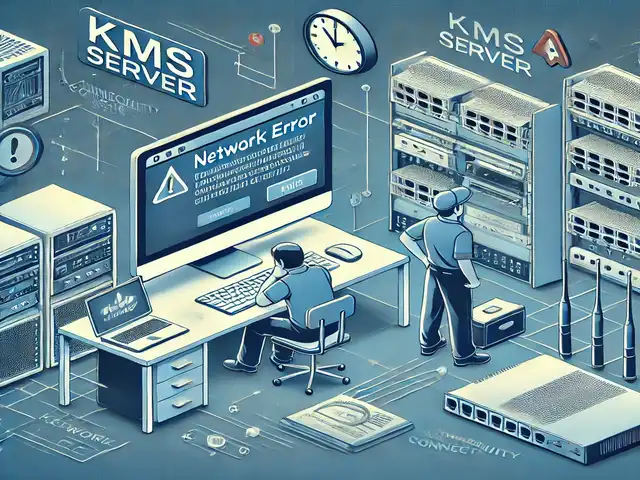
When using Key Management Service Servers (KMS), sometimes things go differently than planned. Here are some common problems and how to fix them, making sure everything works smoothly:
- Clients Not Finding KMS Server: It’s like when friends can’t find your house because the address is wrong. Ensure the KMS Hostnames are correctly listed in the DNS, like the internet’s address book. This helps the computers find the KMS Server like your friend finding your house!
- Insufficient Activation Count: This is when not enough computers are talking to your KMS Server to start the software activation. It’s like needing ten players to start a soccer game but only having five. Ensure enough computers (clients) are connected to meet the Activation Host requirements.
- License Key Issues: Consider the license key a special code to enter a fun park. You need the right code to get in. Check that you’re using the correct KMS Host key and managing it properly. This ensures that your software activations go through without a hitch.
By monitoring these issues and knowing how to fix them, you can keep your KMS running well and your software properly activated!
Advanced KMS Server Management
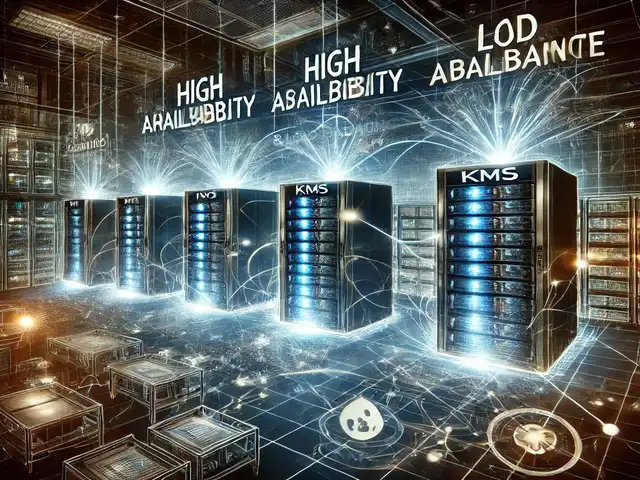
You want everything to run smoothly when you have a big or complex setup for your Key Management Service Servers (KMS). Here are some advanced tips to make sure your KMS system is top-notch:
- High Availability means ensuring your system is always up and running, just like a backup generator during a storm. Set up more than one License Activation Server so that if one has problems, the others can keep everything working without a break. It’s like having extra batteries!
- Audit Logs: Think of logs like a security camera for your computer system. Turn on logging in to your License Key Servers to track what happens. This helps you see if everything is working right or if something strange is happening so you can fix it fast.
- Integration with Other Systems: This is about making your KMS work smoothly with other computer programs and tools you use. It’s like making sure all parts of a machine work well together. By connecting your KMS Network with other IT tools, everything can work as one big team, making things easier and faster.
Following these advanced management steps ensures your KMS setup is strong, secure, and super efficient!
KMS for Different Environments
Here’s a simple breakdown of how KMS servers work in various setups:
- Windows Activation Servers: These servers are like special tools for Windows systems. They ensure all your Windows software gets started and runs correctly, whether on one computer or hundreds in a big office.
- Office Activation Servers: These are dedicated helpers for Microsoft Office programs. They focus only on getting Office products like Word, Excel, and PowerPoint up and running. This ensures that when you open your Office apps, they’re ready to go easily.
- Mixed Environments: Sometimes, you might need to activate both Windows and Office products simultaneously. Some KMS servers are super versatile and can handle both types at once. It’s like having a Swiss Army knife that can do many tasks with just one tool!
How Secure is a KMS Server?
Keeping this server secure ensures only the right people can use it. Here’s how a KMS Server stays secure:
- Updates: Just like you update apps on your phone to fix bugs and keep it safe, a KMS Server needs updates, too. These updates fix any security problems and add new features that make the server work better and safer.
- Limited Access: Only some people should be able to use the KMS Server. It’s like having a special club card only certain people can use to enter a club. Only people who need to use the server should have access to it. This helps prevent anyone who shouldn’t be there from getting in and causing problems.
- Regular Checks: It’s good to check on the KMS Server often to ensure everything works as it should. This is like checking your bike before a ride to ensure the tires are full and the brakes work. Regular checks help catch any issues early before they can become big problems.
By keeping it updated, limiting who can use it, and checking it regularly, a KMS Server can be very secure and keep your software activations safe and running smoothly.
How to Windows Using a KMS Server Activate (KMS server activation)
- Setting Up:
- Install Volume Activation Services: This is done using a program called PowerShell.
- Set Up Your Firewall: Make sure your firewall lets traffic go through on TCP port 1688. This is the special door that KMS uses to talk to your computers.
- Configuring the KMS Host:
- Enter the KMS Host Key: You get this key from where your company gets its Microsoft software.
- Activate the KMS Host: You can do this online or by phone. This step ensures that your KMS server is ready to help activate other computers.
- DNS Configuration:
- Set Up DNS Records: This helps your computers find the KMS server easily. Sometimes, you might need to set these up manually.
- Activating Client Computers:
- Install a GVLK on Each Computer: This special key tells the computer it should talk to your KMS server to get activated.
- Start the Activation: Run a command (slmgr.vbs /ato) that asks the KMS server to activate Windows on each computer.
- Check and Fix Any Problems:
- Monitor Success: Use a command (slmgr.vbs /dli) to see how the activation is going.
- Look for Errors: If something isn’t working, check for common problems, such as wrong DNS settings or not enough computers contacting the KMS server.
- Keep Everything Running Smoothly:
- Check Regularly: As needed, make sure at least 25 Windows computers or 5 servers are talking to your KMS server.
- Manage DNS and Firewall Settings: Adjust settings to ensure all computers can talk to the KMS server.
By following these steps, all your computers will use the KMS server to activate Windows, so they don’t have to connect to Microsoft each time. This makes things much easier and keeps your network running smoothly.
For more detailed instructions and to handle tricky situations, check out Microsoft’s official guidelines on their Learn website and other helpful resources like TheITBros for practical advice on KMS server setup and troubleshooting.
Windows 11 KMS Server List
If you want to start using Windows 11 with a KMS (Key Management Service) server, it’s really important to use the correct setup key for your version of Windows. For example, the setup key for Windows 11 Professional is W269N-WFGWX-YVC9B-4J6C9-T83GX. This special key lets your computer talk to the KMS server to start Windows without contacting Microsoft directly.
Setting Up Your KMS Server: To get your KMS server ready, you need to:
- Install the KMS server role on your server.
- Open TCP port 1688—this door lets your computer and the KMS server talk to each other.
- Ensure your KMS host key is installed and working on your server.
Check Your Server’s Ability: Not all KMS servers can start Windows 11. Some older KMS servers can’t start the newest Windows versions. For example, a server with a Windows Server 2019 key can’t start Windows 11.
Finding a KMS Server: You can look online for lists of up-to-date active KMS servers. These lists show where each server is and whether it’s working right now, which can help you find a server that fits your needs.
Follow the Rules: Using a KMS server must follow Microsoft’s rules. To meet Microsoft’s requirements, the servers need to handle a certain number of activation requests from computers.
How to Set Up and Use a KMS Server: Websites like TheITBros or MajorGeeks have step-by-step guides that show you how to prepare your KMS server and solve any problems you might encounter.
More Help: If you need more info on setup keys or how to get your Windows started with a KMS server, Microsoft’s official sites or tech blogs can greatly help. They have all the details you need to understand how it works.
This simplified guide should help you get started using a KMS server for Windows 11 and ensure that your setup complies with Microsoft’s guidelines and runs smoothly.
FAQs about KMS Servers
What happens if the KMS Server goes down?
If a KMS Server stops working, there’s a special time, called a grace period, when everything still works normally. But if the server isn’t fixed before this time ends, the computer software might start showing as inactive.
Can a KMS Server activate any version of Windows or Office?
A KMS Server can turn on many different versions of Windows and Office, but not all of them. Each server version has specific types of Windows and Office it can handle, depending on the setup and the keys it uses.
How secure is a KMS Server?
KMS servers are secure if you take care of them correctly. It’s important to keep them updated and ensure only the right people can access them. This helps keep everything running safely and smoothly.
Conclusion
KMS Servers are essential for efficient software license management. Proper KMS Server Configuration and management ensure seamless software activation, which is crucial for modern business operations.
